What's New
Displaying results 3021 - 3030 of 4052
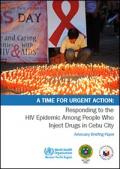
Resource | Publications,
An explosive HIV epidemic among PWID exists in Cebu City. In 2008 HIV transmission was primarily due to sexual contact (90%), but by 2012 it was injecting drug use (77%). The 2011 biological and behavioural surveillance in Cebu City reported HIV prevalence among PWID to be 54%, with Hepatitis C prevalence reaching 94%. The same study found 15% of freelance female sex workers had injected drugs and among male injectors 24% reported same sex behaviours. There are an estimated 6000 PWID in metro Cebu, with 2000 - 2500 PWID in Cebu City, of which the majority share their injecting equipment; many are sexually active, resulting in spread of HIV to their non-injecting wives/ partners and then possibly to their babies. The current public health crisis requires an urgent and well coordinated response.
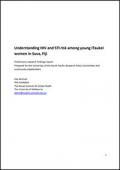
Resource | Publications,
This report aimed to investigate the STI and HIV risk and vulnerability of young iTaukei women attending USP in Suva, Fiji. This research had three objectives: 1) to identify what HIV and STI risk behaviors are occurring among female university students; 2) to identify the determinants of HIV and STI risk behavior among female university students; 3) to determine what is needed to develop a gender and culturally sensitive HIV and STI prevention program on campus that address the specific determinants of risk for female university students.
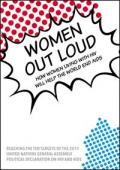
Resource | Publications,
Women may make up half the world’s population, but they do not share it equally. This is especially evident when it comes to HIV. Half of all people living with HIV are women, yet many are underserved or do not know their status. Despite the many successes we have seen, women still face inequalities that will keep the AIDS response from reaching its full potential.
Women out loud amplifies the voices of women living with HIV so that their knowledge is shared and acted upon. This is essential to achieve the 10 targets of the 2011 United Nations Political Declaration on HIV and AIDS.
This report reinforces UNAIDS’ efforts to strengthen the AIDS response’s focus on women. We celebrate the fact that UN Women has joined UNAIDS as its 11th Cosponsor and hope that the newly created UNAIDS Women Living with HIV Dialogue Platform will bring the voices and influence of women living with HIV closer to the UN's day-to-day work.
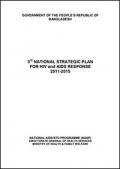
Resource | Publications,
The government of Bangladesh respond to HIV and AIDS from the first case detected in 1989, GOB formed NAC, TAC and the AIDS policy. There are several policy documents developed to guide the national HIV and AIDS Program intervention. The goal of the 3rd national strategic plan for HIV and AIDS Response 2011-2015 is, to minimise the spread of HIV and minimize the impact of AIDS on the individual, family, community, and society. The National AIDS/STD Programme (NASP) is one of the wings of Directorate General of Health Services (DGHS) under the Ministry of Health & Family Welfare (MOHFW) responsible for coordinating with all stakeholders and development partners involved in HIV/AIDS programme activities throughout the country.
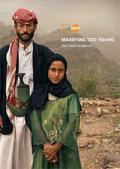
Resource | Publications,
Child marriage is a human rights abuse. It constitutes a grave threat to young girls’ lives, health and future prospects. Marriage for girls can lead to complications related to pregnancy and childbirth, and in developing countries these are the main causes of death among 15–19 year-old girls. Girls who are married are also exposed to sexually transmitted infections, including HIV. For a girl, marriage can mean the end of her education, can set aside her chances of a vocation or career, and can steal from her foundational life choices.
International conventions declare that child marriage is a violation of human rights because it denies girls the right to decide when and with whom to marry. This report is intended to help policymakers prevent this violation of girls’ rights. It summarizes available data and evidence, while offering advice on the thicket of issues involved, and suggests prioritized actions to reduce and eventually eliminate child marriage.
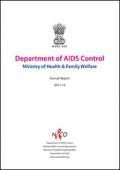
Resource | Publications,
The first National AIDS Control Programme (NACP) was launched in 1992 for prevention and control of HIV/AIDS in India. This was followed by NACP II in 1999 and NACP III in 2007. During different phases of the programme, the focus shifted from raising HIV/AIDS awareness to behaviour change, from a national response to a more decentralised response and to increasing involvement of NGOs and networks of people living with HIV/AIDS (PLHIV). Based on the lessons from NACP I and II, the government designed and implemented NACP III.
NACP Phase-III (2007-2012) has the overall goal of halting and reversing the epidemic in India.
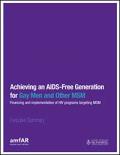
Resource | Publications,
The HIV/AIDS pandemic continues to have a devastating, though often invisible, impact on gay men and other men who have sex with men (MSM) around the world. In low and middle-income countries, MSM are 19 times more likely to be living with HIV than people in the general population and they represent an estimated 10 percent of new infections each year. Yet for decades the epidemic among MSM was officially ignored by governments, donors, and whole societies.
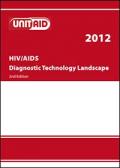
Resource | Publications,
This report reviews the current technology landscape for HIV diagnostics, including (i) the algorithms and tests required in HIV/AIDS care and treatment, both before and after treatment initiation; (ii) the platforms used and price points of that testing; and (iii) the ways in which testing is delivered. With this information as background, the report then reviews the current technologies and diagnostic platforms in three key testing areas: CD4 and viral load testing for adults and children, as well as EID (including EID run on viral load platforms)—all of which are today typically accessed through sophisticated laboratory-based testing platforms, even in resourcelimited settings. The report describes the POC and near-POC CD4, viral load and EID platforms on the market and in the development pipeline, and considers the implications of the landscape, including what efficiencies might be achieved with respect to test algorithms, the cost of testing and decentralized service delivery.
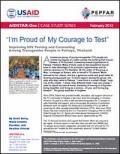
Resource | Publications,
Since 2004, Sisters has provided health, education, and support services to the TG community in Pattaya, a two-hour drive from Bangkok in Chonburi Province. Its goal is to offer a safe and welcoming place for TG people to seek friendship and support, and to encourage the practice of preventive behaviors such as regular HIV testing and counseling (HTC) as well as screening for other sexually transmitted infections (STIs).
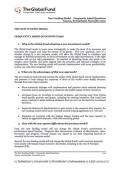
Resource | Guidelines,
The Global Fund needs to invest more strategically, to make the most of its resources and maximize the impact and value-for-money of its grants. This new approach, part of a broader change to a new business model, will allow the Global Fund to rebalance and manage its portfolio proactively, to focus investments on the right interventions, in the right countries and on the right populations.





